Stain Leaning

Can vinegar be used as a natural stain remover for clothes ?
Vinegar can be used as a natural stain remover for clothes due to its acidic properties and antimicrobial benefits. It is effective in removing various types of stains, including grass, blood, wine, coffee, tea, and sweat. To use vinegar as a stain remover, apply it directly to the stain, let it sit for 5-10 minutes, scrub gently, rinse with cold water, and wash according to care label instructions. Vinegar is cost-effective, environmentally friendly, and versatile. However, it should be tested on an inconspicuous area before use and avoided on delicate fabrics.
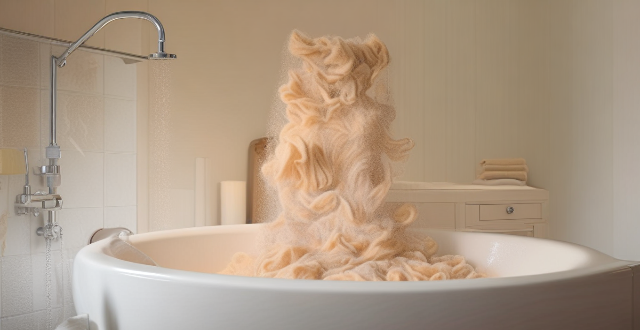
What are the best ways to remove stains from clothes ?
Removing stains from clothes requires pre-treatment, stain removers, home remedies, laundry detergent, and sometimes professional dry cleaning. Pre-treating the stain by blotting it with a clean cloth or paper towel is crucial. Commercial stain removers can be effective for various stains, while home remedies like baking soda and vinegar, hydrogen peroxide, and lemon juice can tackle stubborn stains. Applying laundry detergent directly to the stain and washing it afterward can also work. For delicate fabrics or persistent stains, professional dry cleaning may be necessary. By following these steps, most types of stains can be effectively removed from clothing.

Is it possible to remove rust stains from fabric without damaging it ?
Rust stains can be removed from fabric using natural ingredients such as lemon juice and salt, vinegar and baking soda, or hydrogen peroxide. These methods are effective in breaking down the rust and lifting it away from the fabric without causing damage. It is important to test any cleaning solution on a small area of the fabric before applying it to the stain and to allow enough time for each method to work. If one method does not work, try another one until the stain is completely removed. After removing the rust stain, wash the fabric according to its care instructions to remove any residual cleaning solution and prevent further damage.
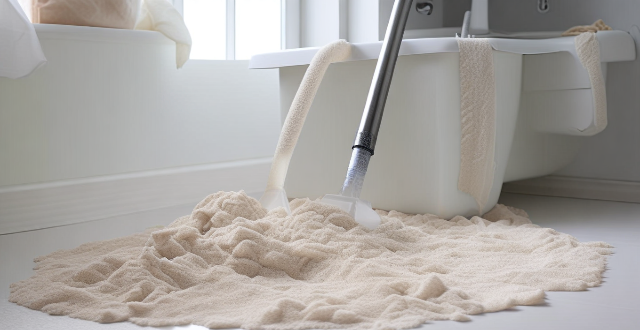
How do I remove stubborn stains from carpets and upholstery ?
Removing stubborn stains from carpets and upholstery requires identifying the type of stain, acting quickly, pre-treating, gently blotting or scrubbing, rinsing and drying thoroughly, and possibly seeking professional help. Testing cleaning solutions on an inconspicuous area before use is recommended to avoid damage or discoloration.

Is there a natural way to clean stains off my clothes ?
Removing stains from clothes can be challenging, but natural methods like using white vinegar, baking soda, lemon juice, hydrogen peroxide, and salt can effectively clean various types of stains. These techniques are gentle on the environment and clothing.

What is the most effective method for removing wine stains from fabric ?
The most effective method for removing wine stains from fabric involves acting quickly, blotting the stain, applying salt and a stain remover, rinsing with cold water, washing the fabric, and checking the stain before drying.
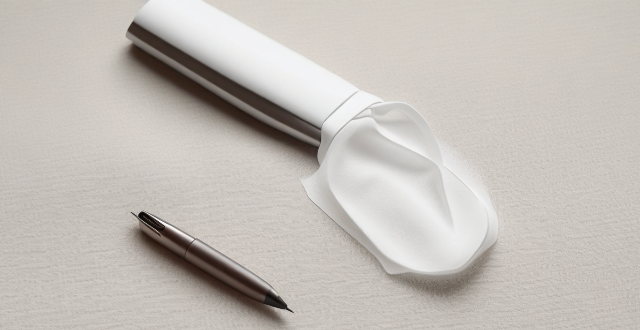
How do I remove ink or pen marks from my clothing ?
Removing ink or pen marks from clothing can be challenging, but with the right techniques, it's often possible. Identify the type of ink, act quickly to blot wet ink, pre-treat the stain using appropriate methods for water-based, oil-based, or permanent marker ink, machine wash following care label instructions, check the stain before drying, and dry according to care label instructions. Always test cleaning solutions on an inconspicuous area first and consider professional cleaners for delicate or valuable garments. Patience and persistence are key when dealing with stubborn stains.

How can I get rid of grease stains on my favorite shirt ?
Removing grease stains from your favorite shirt can be a daunting task, but with the right techniques and products, it is possible to get rid of these unsightly blemishes. Here are some steps you can follow to remove grease stains from your favorite shirt: 1. Act Quickly: The first step in removing grease stains is to act quickly. The longer the stain sits on your shirt, the harder it will be to remove. As soon as you notice the stain, take action to remove it. 2. Blot the Stain: Use a clean cloth or paper towel to blot the stain gently. Do not rub the stain aggressively, as this can spread the grease further into the fabric. Instead, apply gentle pressure to absorb as much of the grease as possible. 3. Apply a Stain Remover: Apply a stain remover specifically designed for grease stains. You can use a commercial stain remover or make your own by mixing equal parts of dish soap and white vinegar. Apply the solution directly to the stain and let it sit for 5-10 minutes. 4. Wash the Shirt: After allowing the stain remover to sit on the stain, wash the shirt in cold water using a laundry detergent that contains enzymes. Enzymes are effective at breaking down grease and oil, making it easier to remove the stain. Avoid using hot water, as this can set the stain permanently. 5. Check the Stain: Before drying the shirt, check to see if the stain has been removed. If the stain is still visible, repeat steps 3 and 4 until the stain is completely gone. Do not dry the shirt until the stain is completely removed, as heat can set the stain permanently. 6. Dry the Shirt: Once the stain is removed, dry the shirt according to the care label instructions. If you are unsure about the care instructions, it is best to air dry the shirt or use a low heat setting on your dryer. In conclusion, removing grease stains from your favorite shirt requires quick action, the right products, and patience. By following these steps, you can effectively remove grease stains and keep your favorite shirt looking its best.

What's the best way to treat set-in stains on white clothing ?
Set-in stains on white clothing can be stubborn and difficult to remove, but with the right approach, they can often be successfully treated. Here are some steps to follow: 1. Identify the Stain: First, identify the type of stain you are dealing with. Different stains require different treatments. For example, protein stains like blood or grass require a different approach than tannin stains like tea or coffee. 2. Act Quickly: The sooner you treat a stain, the easier it is to remove. If the stain is still wet, blot it with a clean cloth or paper towel to remove as much of the substance as possible. 3. Pre-Treat the Stain: Before washing, pre-treat the stain with a suitable stain remover. Choose a product that is safe for use on white clothing and apply it directly to the stain following the instructions on the label. Let it sit for the recommended time. 4. Wash in Hot Water: Wash the garment in hot water, using a detergent that is designed for white clothing. Check the care label on your garment to ensure that it can be washed in hot water. If not, use the warmest water recommended. 5. Use Chlorine Bleach if Necessary: If the stain persists after washing, you can use chlorine bleach. However, be sure to check the care label on your garment first. Some fabrics may not be able to handle bleach. If your garment is made of a material that can be safely bleached, add chlorine bleach to the wash cycle according to the package instructions. 6. Rinse Thoroughly: Rinse the garment thoroughly to remove all traces of the stain and any cleaning products used. 7. Dry and Check: Dry the garment and check to see if the stain has been removed. If not, repeat the process before drying again. Once the stain is gone, you can dry the garment as usual. In conclusion, treating set-in stains on white clothing requires patience and persistence. By identifying the stain, acting quickly, pre-treating, washing in hot water, using chlorine bleach if necessary, rinsing thoroughly, drying, and checking, you can often successfully remove even the most stubborn stains.

Are there any DIY tricks for getting out tough stains like blood or grass ?
When it comes to removing tough stains like blood or grass, there are several DIY tricks you can try before resorting to professional cleaning services. These include soaking the stained area in cold water, applying hydrogen peroxide directly to the stain, creating a paste with salt and cold water, applying white vinegar directly to the stain, mixing lemon juice with salt to create a paste, and mixing dish soap with baking soda to create a paste. It is important to always test any solution on an inconspicuous area of the fabric first to ensure it doesn't cause damage or discoloration. If these DIY methods fail, consider seeking professional help from a cleaning service.

What are some quick and easy ways to get my clothes clean ?
Here are some quick and easy ways to keep your wardrobe fresh and clean: 1. Spot Cleaning: For small stains or spills, dampen a cloth with water or a mild detergent and gently blot the affected area until the stain is removed. 2. Hand Washing: Fill a sink or basin with warm water and add a small amount of gentle detergent. Gently agitate clothing items in the water, then rinse thoroughly and hang to dry. 3. Machine Washing: Sort clothes by color and fabric type before washing. Use a gentle cycle and cold water for delicate items, and warmer water for more durable fabrics. 4. Dry Cleaning: Check care labels on garments made from silk, wool, or other delicate materials. If dry cleaning is recommended, take clothes to a professional dry cleaner. 5. Air Drying: Hang clothes outside on a clothesline or indoors on a drying rack to save energy and prolong their lifespan. This method also helps eliminate wrinkles and static cling. 6. Steaming: Hang clothes in a steamy bathroom after a shower or use a handheld garment steamer to remove wrinkles and odors. By incorporating these methods into your routine, you can keep your wardrobe looking its best without spending hours on laundry day.

What are the best natural ingredients for making homemade cleaning products ?
Cleaning your home doesn't have to involve harsh chemicals or expensive store-bought products. With a few natural ingredients, you can create effective and eco-friendly cleaning solutions that are safe for your family and the environment. Here are some of the best natural ingredients for making homemade cleaning products: 1. White Vinegar: A versatile and inexpensive cleaning agent that cuts through grease, disinfects surfaces, removes stains and odors, and deodorizes the air. Use it as an all-purpose cleaner, glass cleaner, or oven cleaner. 2. Baking Soda: A gentle yet powerful abrasive that tackles tough cleaning jobs without scratching surfaces. It neutralizes acidic odors, leaves no residue behind, and can be used as a sink and tub scrub, carpet deodorizer, or laundry booster. 3. Lemon Juice: A natural disinfectant and deodorizer that leaves surfaces smelling fresh and clean. It cuts through grease, leaves a pleasant citrus scent, and can be used as an all-purpose cleaner, chrome polish, or hardwater stain remover. 4. Castile Soap: A vegetable-based soap that is gentle on skin and surfaces while still being effective at cutting through dirt and grime. It is biodegradable, eco-friendly, and can be used in various dilutions for different purposes such as an all-purpose cleaner, floor cleaner, or handwash. 5. Essential Oils (Optional): While not strictly cleaning agents, essential oils can enhance the effectiveness of your homemade cleaning products by adding antibacterial properties and a pleasant scent. Popular choices include tea tree oil, lavender oil, and lemon oil.
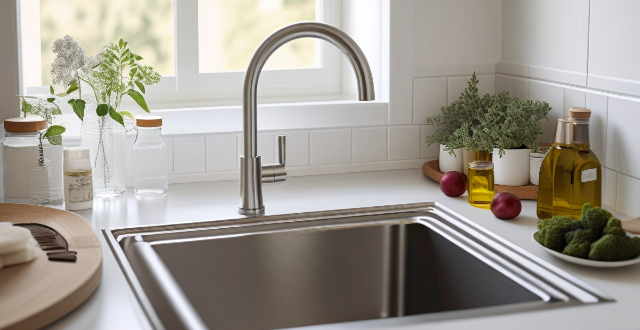
What is the best way to clean and maintain stainless steel kitchen appliances ?
Stainless steel kitchen appliances require proper cleaning and maintenance to keep them looking their best. To clean them, gather materials such as a microfiber cloth, mild dish soap, water, white vinegar, baking soda, and olive or mineral oil for polishing. The cleaning process involves removing grease and stains with a damp cloth, rinsing and drying the surface, removing stubborn stains with a baking soda paste, and polishing the surface with oil. In addition to regular cleaning, maintenance tips include avoiding harsh chemicals and abrasive cleaners, using a gentle touch when cleaning, keeping appliances away from direct sunlight and heat sources, and using protective covers when not in use.

What are some effective home cleaning hacks ?
The article provides a comprehensive list of cleaning hacks for different areas of the home, such as the kitchen, bathroom, living area, and laundry room. Each section includes various tips and tricks to make cleaning easier and more efficient. For example, in the kitchen, using baking soda and vinegar can help degrease the oven, while steam cleaning with vinegar can easily clean the microwave. In the bathroom, soaking the showerhead in vinegar can remove deposits, and hydrogen peroxide can be used to clean tile and grout. The article also suggests using natural ingredients like olive oil and lemon juice for furniture polish and saltwater spray for ironing clothes. By following these simple yet effective cleaning hacks, readers can maintain a clean and organized home without spending too much time on cleaning tasks.

How can I prevent stains from setting into my laundry ?
To prevent stains from setting into laundry, promptlyTo prevent stains from setting into laundry, promptly, sort clothes by color and use cold water for washing, launder immediately after wearing, and avoid overloading the washer.
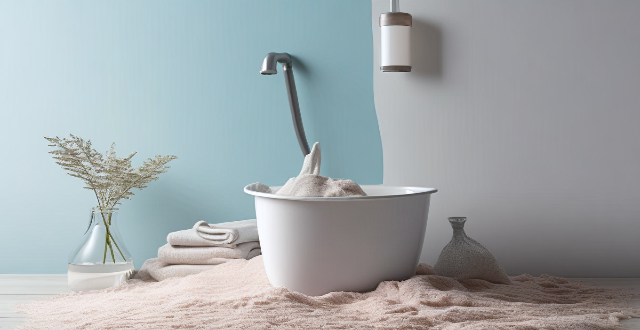
What are some effective strategies for doing laundry in less time ?
Effective strategies for doing laundry in less time include planning ahead, using a larger capacity washer, pretreating stains, using cold water and high-efficiency detergent, using the quick wash cycle, and hanging clothes to dry. These strategies can save time, energy, and money while still getting clothes clean and fresh.

How can I streamline my laundry process to be more productive ?
Streamlining your laundry process can save time and reduce stress. Here are some tips to help you be more productive with your laundry tasks: 1. **Preparation Phase**: - Gather all necessary laundry supplies like detergent, fabric softener, and stain removers. - Sort clothes by color and fabric type. - Establish a routine for doing laundry and use proper storage for dirty and clean clothes. 2. **Washing Cycle**: - Avoid overloading the washing machine and separate heavy items from delicates. - Choose the appropriate wash cycle based on soil levels and adjust water temperature for energy efficiency. 3. **Drying Process**: - Dry similar items together and clean the lint screen after every use to improve dryer efficiency. - Use timed drying to avoid overdrying and fold clothes immediately to prevent wrinkles. 4. **Organization and Maintenance**: - Fold or hang clothes immediately after drying to reduce wrinkling and put away clean clothes to avoid clutter. - Keep the laundry area clean by wiping down surfaces after each use and regularly cleaning the washing and drying machines. By implementing these steps, you can make your laundry process more efficient, saving time and effort in the long run.

How do I achieve a professional-looking makeup job in a hurry ?
Achieving a professional-looking makeup job in a hurry is possible with the right techniques and products. Prepare your skin by cleansing, moisturizing, and priming. Choose the right foundation formula and apply it with a makeup sponge or dense brush for even coverage. Contour and highlight to define facial structure and add a glowing effect. Add color with blush, bronzer, eyeshadow, and eyeliner, and choose a long-lasting lipstick or stain. Set your makeup with setting powder and spray, and carry key items for quick touch-ups. Practice makes perfect, so streamline your routine and find what works best for you when you're in a hurry.

What are the best ways to wash clothes quickly and effectively ?
This article discusses the best ways to wash clothes quickly and effectively. It covers preparation steps such as sorting clothes, pre-treating stains, and checking pockets. It also explains how to set up a washing machine with the right cycle, warm water, and detergent. Handwashing clothes is another option that involves soaking clothes in warm water with detergent, scrubbing gently, rinsing thoroughly, and hanging to dry. After washing, drying clothes properly is important to prevent wrinkles and damage. Overall, following these steps can help you save time and keep your clothes clean and fresh.

What are some tips for cleaning hard-to-reach areas in my home ?
Cleaning hard-to-reach areas in your home can be challenging, but with the right tools and techniques, it becomes more manageable. Use extendable dusters, flexible brushes, and long-handled tools for better access. Be creative with vacuum attachments, steam cleaners, and magnetic sweepers to simplify the process. Remember safety by using non-slip step stools and wearing gloves. Regular cleaning schedules and making cleaning fun can help maintain these areas.

How can I save time and energy when doing laundry ?
Doing laundry can be a time-consuming and energy-draining task. However, with the right strategies and habits, you can make this chore more efficient and less taxing. Here are some tips on how to save time and energy when doing laundry: 1. Sort your clothes by color, fabric, and stain level. 2. Use a front-loading washer for water and energy savings. 3. Choose the right detergent, preferably high-efficiency (HE) for HE washers. 4. Use cold water for most loads to save energy. 5. Select the appropriate wash cycle based on the type of clothing. 6. Don't overload your machine to ensure even cleaning and avoid damage. 7. Dry efficiently by using the right setting, drying similar items together, and keeping the lint screen clean. 8. Fold and put away promptly to prevent wrinkles and reduce ironing. 9. Maintain your washer and dryer for efficiency and longevity. 10. Consider a laundry service or laundromat for bulk loads or time constraints. By implementing these strategies, you can streamline your laundry routine, saving both time and energy. Remember, finding what works best for your lifestyle and sticking to a consistent schedule will help make laundry day much more manageable.